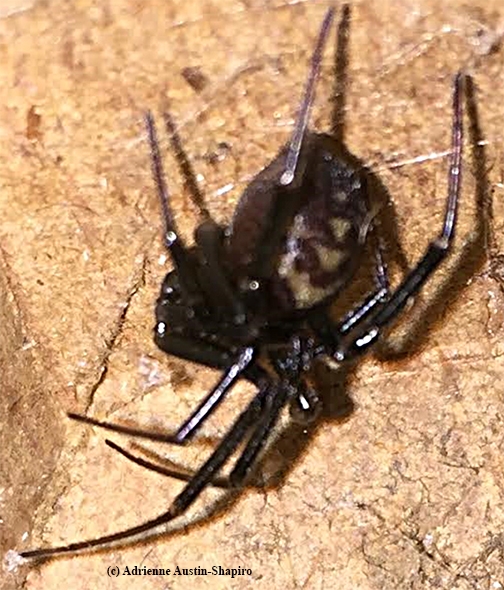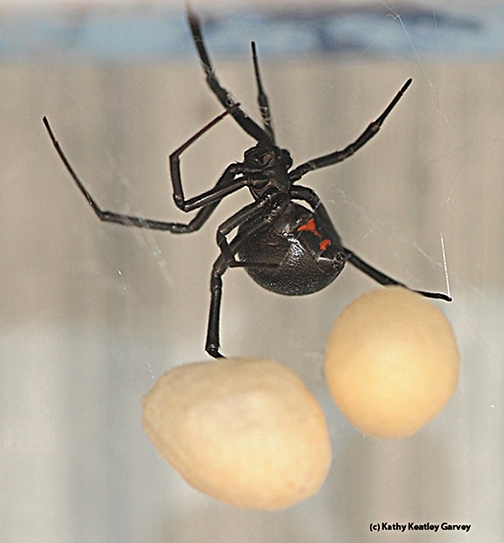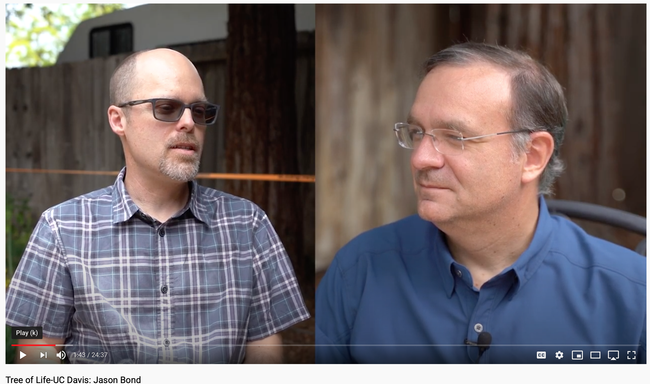- Author: Kathy Keatley Garvey

A free, public open house on “Eight-Legged Encounters,” featuring spiders and other arachnids, promises to be one of the biggest events--if not the leggiest!--of the year on the UC Davis campus and beyond.
The event, set from 1 to 4 p.m., Saturday, June 25 in the Bohart Museum of Entomology, Academic Surge Building, Crocker Lane, will officially kick off the 2022 American Arachnological
A "powerhouse" of arachnologists will be participating, said Jason Bond, associate dean, College of Agricultural and Environmental Sciences, and the Evert and Marion Schlinger Endowed Chair in Insect Systematics, UC Davis Department of Entomology and Nematology. He will be hosting the conference with Lisa Chamberland, postdoctoral research associate, Department of Entomology and Nematology, and Joel Ledford, assistant professor of teaching, Department of Plant Biology, College of Biological Sciences.
“There will be everything--spider specimens, live arachnids, activities, artwork, etc.," Professor Bond said.
Some 20 exhibits and activities will be set up in the hallway of the Academic Surge Building, said Tabatha Yang, the Bohart Museum's education and outreach coordinator.
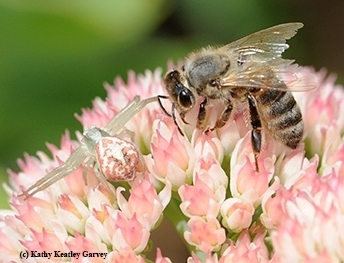
Through the NSF grant, awarded in 2013, Hebets seeks to educate the public “about the wonders of biology and the possibility of scientific discovery using a charismatic and engaging group of animals--arachnids. Arachnids (spiders and their relatives) are ubiquitous, thriving in most habitable environments on our planet (including underwater),” Professor Hebets writes on her website at https://hebetslab.unl.edu/
“As a scientist, a mother, and an educator, I often see the disconnect between youth and the world around them; between problem solving skills, observation skills, critical thinking, natural curiosity and the more traditional formal teaching programs experienced by many students,” she writes. “Youth are innately curious and tremendously creative and my aim is to leverage these traits for their own educational advancements in a fun and engaging manner.”
To date, Hebets and her collaborators have developed more than 25 modular activity stations “encompassing arts and crafts, experiments, games, and other hands-on activities." They include classification and taxonomy, spiders and silk, path of predators, and hands-on science.
Also at the open house, plans call for “A Name that Spider" event, coordinated by postdoctoral fellow Lisa Chamberland and PhD students Iris Bright and Emma Jochim of the Bond lab. “We'll have an exhibit at the event with details on the spider,” Bond said. “We'd like to restrict naming suggestions to be youths attending the event, students 18 years and younger."
Another highlight of the American Arachnological
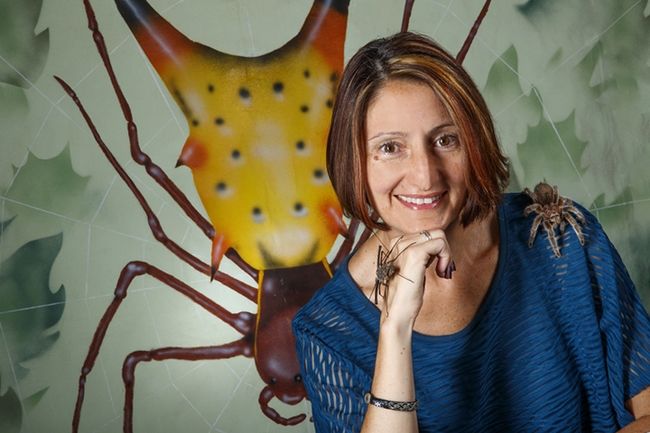
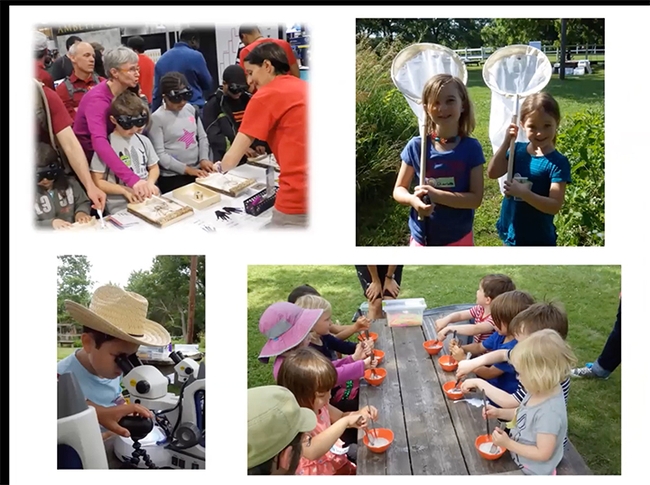
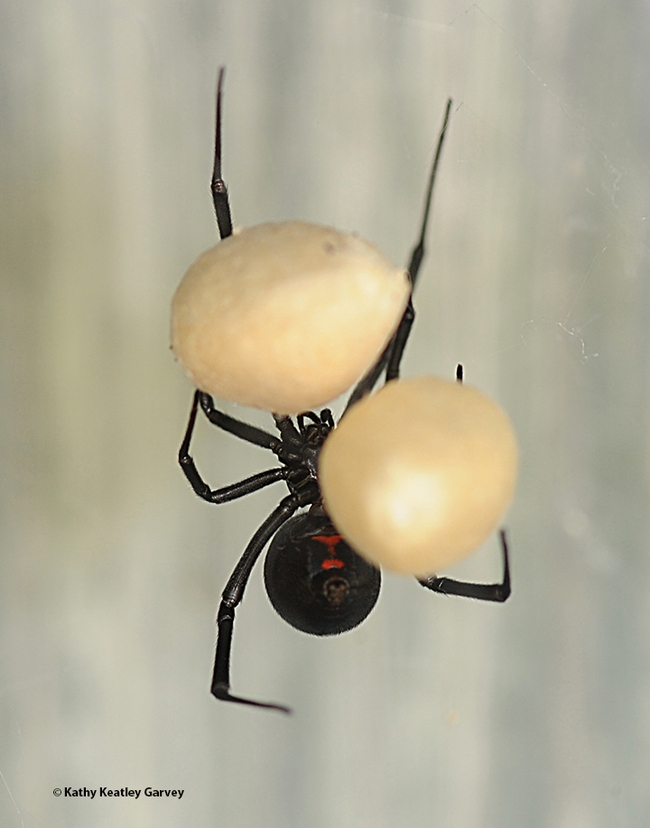
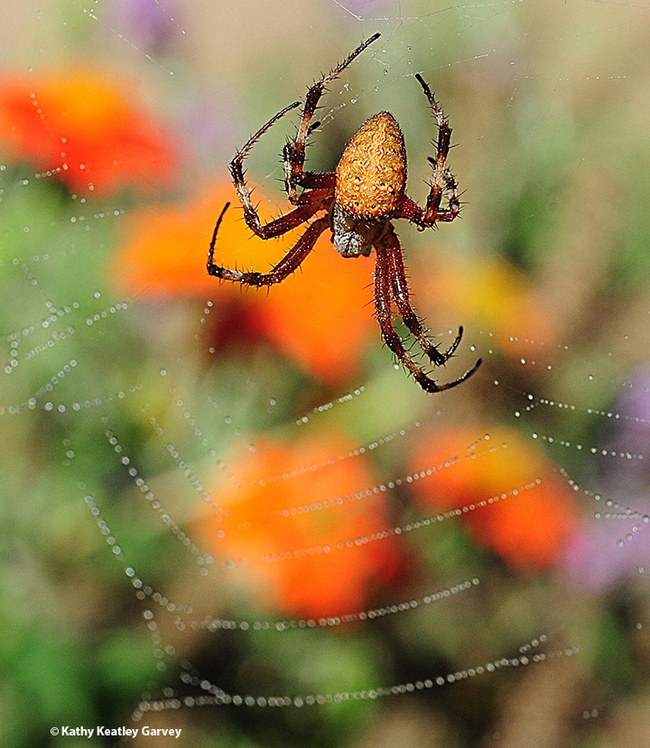
- Author: Kathy Keatley Garvey
If you dislike spiders, you might want to check out the political scene (probably not!), the almond pollination season (yes, it's coming), or ask Siri "When does spring begin? (Answer: March 20)
Wait, are you still there? Whew! Then you'll want to know about the upcoming gathering of arachnologists--those who engage in the scientific study of arachnids, including spiders, scorpions and tarantulas.
News flash: The University of California, Davis, will be the site of the 2022 American Arachnological Society (AAS) convention. It's set from Sunday, June 26 through Thursday, June 30.
It will be hosted by two UC Davis arachnologists: Jason Bond, the Evert and Marion Schlinger Endowed Chair in Insect Systematics, UC Davis Department of Entomology and Nematology, and associate dean, College of Agricultural and Environmental Sciences; and Joel Ledford, assistant professor of teaching, Department of Plant Biology, College of Biological Sciences.
Formal meeting registration will begin Sunday afternoon, June 26, followed by an evening reception. A local daylong field trip is planned for Thursday, June 30. (Pre-register for the meeting at https://ces.ucdavis.edu/AASM)
"We typically expect somewhere around 125-150," Bond says.
The event is sponsored by the U.S. National Science Foundation. In collaboration with the UC Davis Bohart Museum of Entomology and the University of Nebraska, “we will also host a pre-meeting, outreach event, ‘Eight-Legged Encounters' for the Davis community and campus,” Bond said. It's tentatively planned for Saturday, June 25. Those interested in attending should contact Bond at jbond@ucdavis.edu.
The purpose of the American Arachnological Society, founded in 1972, is “to further the study of arachnids, foster closer cooperation and understanding between amateur and professional arachnologists, and to publish the Journal of Arachnology," according to its website.
Factoid from AAS: "Spiders (order Araneae) are air-breathing arthropods that have eight legs and chelicerae with fangs able to inject venom. They are the largest order of arachnids and rank seventh in total species diversity among all orders of organisms. Spiders are found worldwide on every continent except for Antarctica, and have become established in nearly every habitat with the exceptions of air and sea colonization. As of March 2021, at least 49,200 spider species, and 129 families have been recorded by taxonomists. However, there has been dissension within the scientific community as to how all these families should be classified, as evidenced by the over 20 different classifications that have been proposed since 1900."
Also, check out the AAS frequently answered questions. Did you know you can ask a question?
Question: "Is it true that the black widow spider always eats her mate?"
Answer: "Nope. Black widow females are no more likely than any other female spider to eat their mates. If the female is ready to mate and if the male sings the right sweet silk song to her, then she will allow him to approach and to mate. If the female is not particularly hungry, she will likely allow the male to leave unscathed after copulation. However, the female black widow, as is common in spiders, is larger than the male. Thus, if she is hungry, she may feed on the male but this is true of many species of spiders."
Meanwhile, if you want to learn the basics about common spiders found in California, the UC Statewide Integrated Pest Management Program website offers information on black widow spiders, jumping spiders, common house spiders, and tarantulas, among others (including the hobo spider, which is not found in California). A table, illustrated with photos, lists the common spider families in North America, including:
- Agelenidae, funnel weavers or grass spiders
- Araneidae, orb weavers or garden spiders
- Clubionidae (including Corinnidae), sac spiders or twoclawed hunting spiders
- Linyphiidae (=Microphantidae), dwarf spiders
- Lycosidae, wolf spiders
- Oxyopidae, lynx spiders
- Salticidae, jumping spiders
- Theridiidae, cobweb, cobweb weaver, or combfooted spiders
- Thomisidae, crab spiders or flower spiders
If you're like me, you've probably seen--and admired--scores of spiders in your garden. Want to know who's coming to dinner? Here are images of some of my favorites:
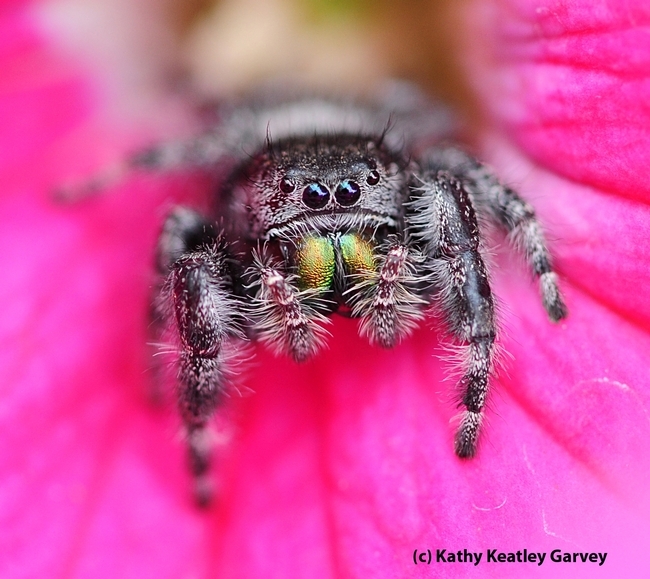
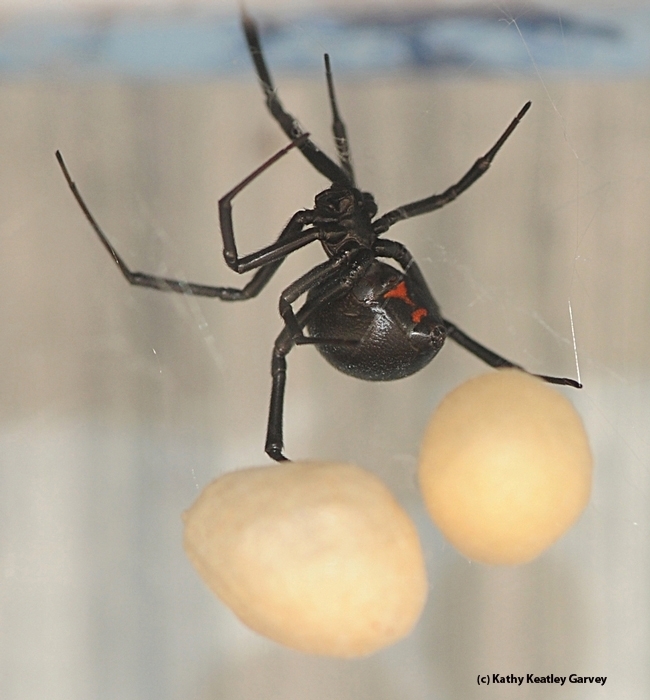
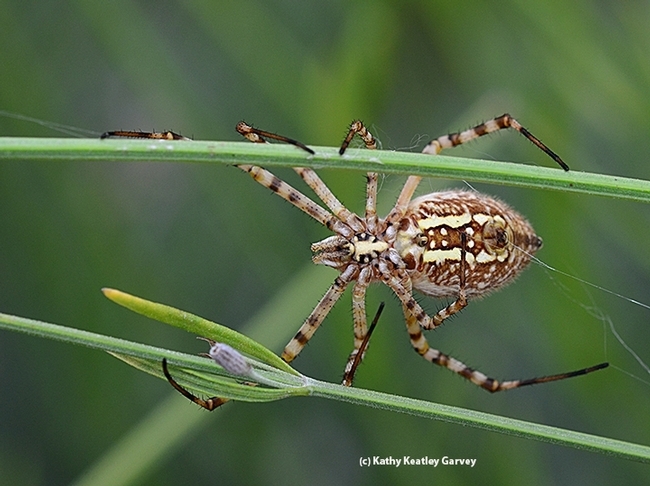
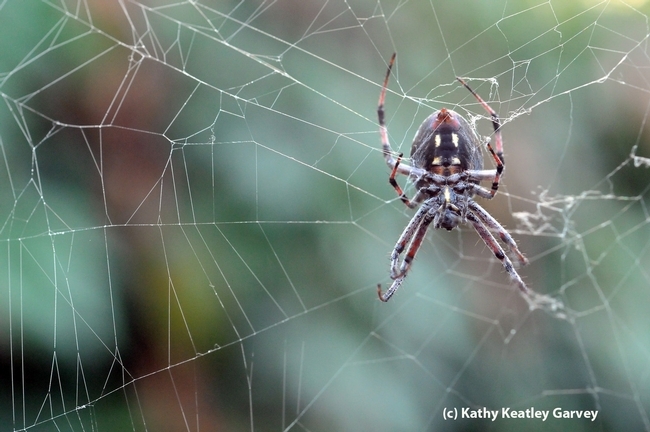
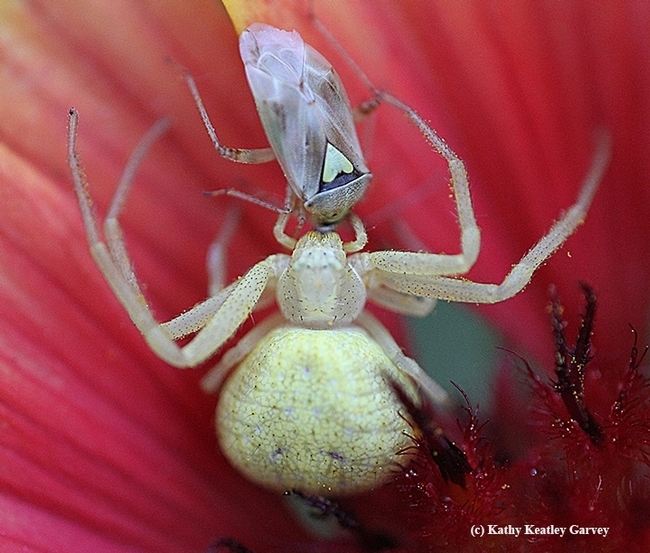
- Author: Kathy Keatley Garvey
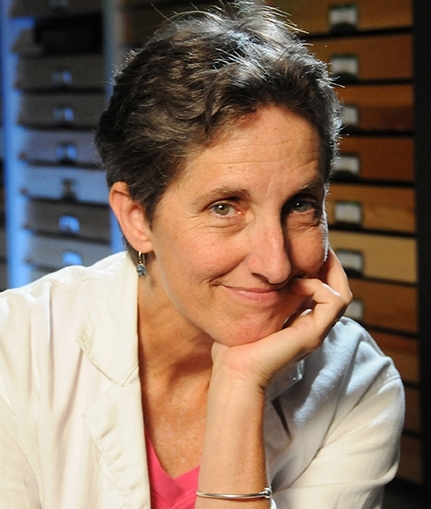
Yes! It's among dozens of fact sheets (mostly insects but some arachnids and other non-insects) posted on the Bohart Museum website. All can be accessed and downloaded at no charge.
Lynn Kimsey, director of the Bohart Museum and a UC Davis professor of entomology, writes the fact sheets, including this one, titled "Widow Spiders."
"Widows are large, distinctive spiders in the genus Latrodectus," Kimsey writes. The Latrodectus mactans or black widow is found throughout the world in warmer regions, while the brown widow, L. geometricus, is found in warmer parts of the United States, including California.
You'll find widow spiders in and around homes, garages, barns and other human-made structures in California. "They build a tough, messy-looking three dimensional web in or behind objects in secluded and protected locations," Kimsey relates.
"During the summer months they may also commonly be found outside under shrubs, and other garden plants, or near porch lights," she says. "These spiders are excellent at controlling insects, particularly flies and crickets. They do not particularly like feeding on cockroaches, but will do so when other insects are unavailable."
What most folks seem to want to know about them are the bites. How painful and toxic are they?
"All spiders have painful and sometimes dangerous neurotoxic bites, but often give dry bites, with no venom," Kimsey points out. "In fact these are the only spiders in the United States with neurotoxic venom. The bites cause extreme physical discomfort and illness for several days to a week and can only be treated symptomatically. Common symptoms include pain in the vicinity of the bite, muscle aches, severe abdominal pain, vomiting, muscular cramping, sweating, fever and head- ache. The bite location itself may go unnoticed."
"There is usually no swelling at the site of the bite, where a small necrotic lesion may form, which heals slowly over a period of weeks or months. Black widow bites are rarely life threatening but may be dangerous for small children or individuals with chronic health problems. There have been no deaths from the bite of this spider for decades. Black widow bites can be dangerous for pets and can be fatal to small dogs or cats."
Kimsey advises that control is not necessary "unless a black widow is in an area frequented by people, particularly children, or by pets. It is important to remember that these are very shy spiders and never bite unless physically threatened."
Noted spider authority Jason Bond, the Evert and Marion Schlinger Endowed Chair in Insect Systematics, UC Davis Department of Entomology and Nematology and his lab usually present a program at the Bohart Museum on spiders at least once a year or engage with folks at the open houses.
The Bohart Museum of Entomology, located in Room 1124 of the Academic Surge Building on Crocker Lane, UC Davis campus, is the home of nearly 8 million insect specimens, plus a live "petting zoo" (Madagascar hissing cockroaches, walking sticks and tarantulas) and a gift shop. The Bohart is temporarily closed due to the COVID-19 pandemic but the online gift shop is open, where you can find insect-themed t-shirts, hoodies, jewelry, posters, books, pens, and stuffed animal toys, as well as insect-collecting equipment.
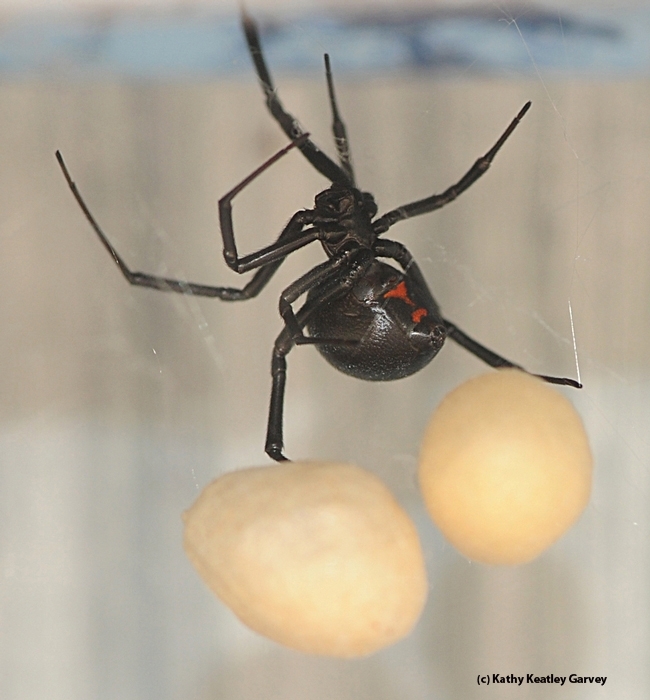
- Author: Kathy Keatley Garvey
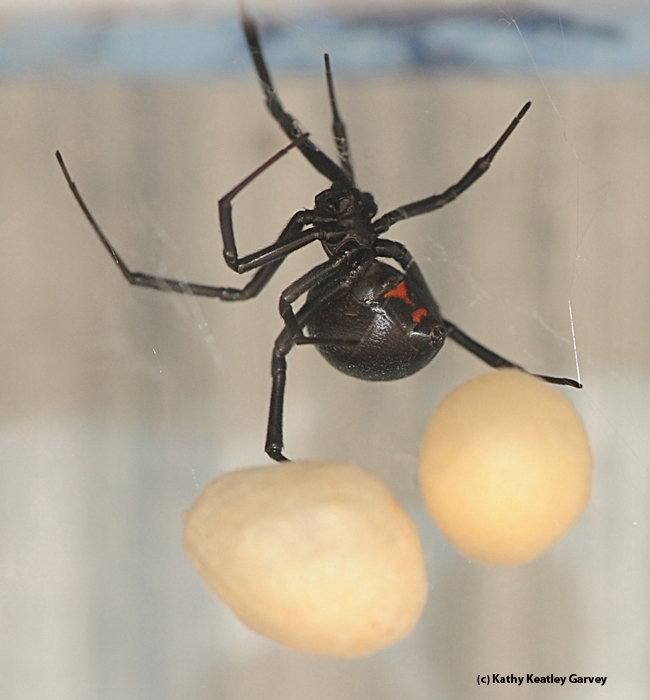
Sometimes it's found in a parade, where the "fear" turns to cheers and applause.
Take the case of the 40-foot black widow spider--yes, 40-foot spider!--that the UC Davis Entomology Club entered in the 103rd annual UC Davis Picnic Parade on Saturday, April 22.
The spider drew oohs and aahs from the crowd, and judges selected it the winner of the “Best Organization” category. It continued to draw oohs and aahs when the club showcased it in front of Briggs Hall on Picnic Day. Thousands of visitors stopped to look or capture photos with their families or take selfies. Little kids just stood and stared. "What's that, Mommy?"
What a spider! And complete with that distinguishing red hourglass marking.
“We built it three years ago,” related president Maia Lundy. “This year we just had to clean it up and make some modifications, like adding ventilation. It took us two meetings --or about 4 hours- of work this year. When we originally built it, we met several times over about a month to finish it. It's made out of plastic sheeting, chicken wire, pvc pipe, pool noodles, window screening, and held together by lots of duct tape and zip ties!”
The spider came to life in the backyard of entomologists Robert and Lynn Kimsey of the UC Davis Department of Entomology and Nematology faculty. Robert Kimsey, a forensic entomologist, serves as the club's advisor. Lynn directs the Bohart Museum of Entomology. Her specialty is wasps, but she answers all kinds of questions about insects and arachnids at the Bohart Museum.
The black widow spider is no stranger to the parade. It's reminiscent of the one that the UC Davis Entomology Club built for the parade about 25 years ago.
The Entomology Club decided to revive the project in 2015. It all took place in the Kimsey yard, and Robert Kimsey offered a blow-by-blow account then as he watched it develop from plastic sheeting to a black widow spider. “It is huge and currently in pieces as it is getting its skin and pedipalps and other minor body parts and whatnot. It is anatomically correct in every way! The students have been trained well in arachnology!”
“There are legs all over the place,” Kimsey said of the eight legs, each slightly less than 20 feet long. In real life, the body of the black widow spans about 1.5 inches long.
Kimsey said membership in the entomology club is open to all interested persons, including faculty, staff, college and high school students and community residents. (Contact entomologyclub@gmail.com.) President Maia Lundy heads the club with Jamie Fong, vice president; Andre Poon, treasurer; Lovey Corniel, secretary; and Chloe Shott, vice secretary.
As for black widow spiders, yes, the bite is venomous. The glands contain the neurotoxin, latrotoxin, which causes the condition latrodectism, both named after the genus, according to Wikipedia. "The female black widow has unusually large venom glands and its bite can be particularly harmful to humans. However, despite the genus' notoriety, Latrodectus bites are rarely fatal. Only female bites are dangerous to humans."
Take a bow, UC Davis Entomology Club. Well done! The prize: a certificate and a glass trophy.
The black widow spider joined seven other parade award winners:
- Best Community Entry: Davis Whymcycle Society
- Most Spirited: DEVO (Davis Enology and Viticulture Organization)
- Best Theme: Biological and Agricultural Engineering
- Best Animal Entry: Canine Companions for Independence
- Best Department Entry: UC Davis School of Veterinary Medicine
- Best Organization: Entomology Club
- Parade Marshal's Choice: Bakuhatsu Taiko Dan
- Parade Participants' Choice: West Plainfield 4-H Club, Woodland
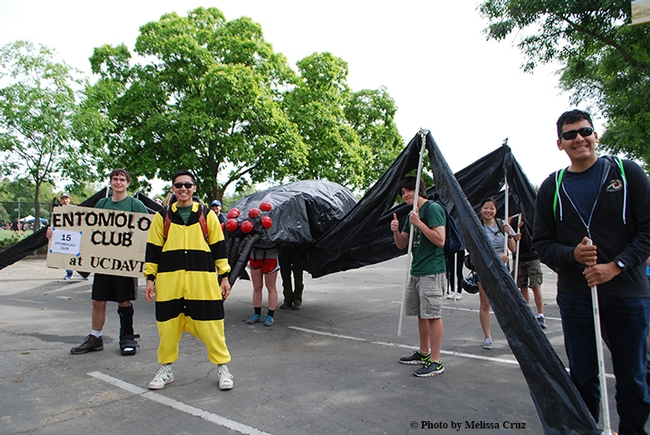
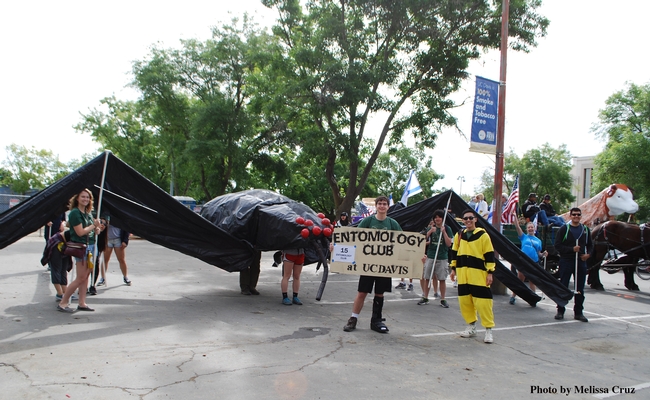
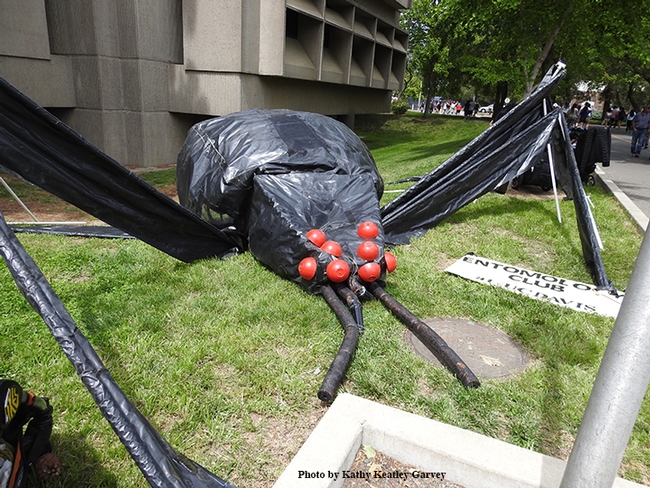

- Author: Kathy Keatley Garvey
This just in for Halloween!
Ever seen a false black widow spider?
Commonly known as the cupboard spider, it's a semi-cosmopolitan spider that's often confused with the "real" black widow spider, known for its powerful venom.
Adrienne Shapiro of Davis took this photo (below) of a spider on the Shapiro property (photographed and released). Her husband, Art, distinguished professor of evolution and ecology, identified it as a female false black widow, Steatoda grossa.
"The overall appearance is very similar to the real thing, except it lacks the red spot on the belly and usually--but not always--has some yellow patterning on the dorsal abdomen: a crescent-like line at the anterior end and a row of triangular spots down the midline, visible here," Shapiro commented.
"But a few may be all black, or the yellow is barely visible," he noted. "This is a semi-cosmopolitan species usually found in or around buildings. It's originally from the Mediterranean region and in the United States and is mostly urban-bicoastal, absent from the heartland. Its habits are nearly identical to the black widow. It's not very common and I personally have never seen it in Davis before. The bite of the female IS venomous, but not to the degree a true black widow bite is. The symptoms are usually local pain, redness and blistering, but some people report generalized malaise for up to a couple of days. I am unaware of any deaths or serious sequelae."
Steve Heydon, senior museum scientist at the Bohart Museum of Entomology, UC Davis, says he gets a few calls about the false black widow. "Steatoda mostly lives under things on the ground," he said, "while the black widows live a little bit off the ground."
We've never seen the false black widow, but have seen numerous black widows (genus Latrodectus.) One black widow homesteaded on the rim of our swimming pool several years ago and we managed to photograph Mama straddling her egg cases. The familiar red hourglass was definitely visible!
The black widow's bite, particularly harmful to people, contains neurotoxin latrotoxin, which causes the condition latrodectism, both named for the genus. Only the female bite is harmful. But the bite is rarely fatal to humans.
We watched Mama scurry around, seemingly trying to protect both egg cases simultaneously from the long-lensed camera.
She was like a Mama Grizzly protecting her cubs.
